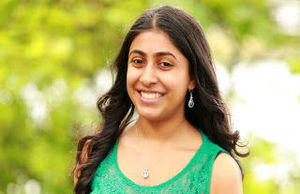Contribute
| Seven Indian American Teens Named The Davidson Institute Of Talent Development Fellows |
Press Release
10/08/2015
The Davidson Institute of Talent Development recently announced its 2015 Fellows, among which seven Indian American teens were named.
The institute honored 20 teens throughout the nation with varying levels of scholarships, including $50,000, $25,000 and $10,000. Three were awarded a $50,000 scholarship and two were Indian American: 17-year-olds Dhaivat Pandya, of Appleton, Wis., and Swetha Shutthanandan, of Richland, Wash.
Three others – 18-year-old Saumya Keremane, of Riverside, Calif.; Deepika Kurup, 17, of Nashua, N.H.; and 16-year-old Sreya Vemuri, of Carmel, Ind. – were honored with $25,000 scholarships. Augustine Chemparathy, 18, of San Ramon, Calif.; and Vineet Kosaraju, 16, of Saratoga, Calif., received $10,000 scholarships.
The Davidson Fellows Scholarship program awards students 18 and younger who have created significant projects that have the potential to benefit society in science, technology, engineering, mathematics, literature and music fields.
Since its inception in 2001, the program has divvied out more than $6 million in scholarships to 266 fellows.
Pandya was awarded the largest scholarship amount for his program, “Algorithms for Minimum Cost Linear Network Coding Design for Networks with General Connections.â€
The project helps to improve the efficiency of the Internet and will help support the adoption of Internet connectivity across the world.
“An Internet connection isn’t just a way to watch YouTube videos or check Facebook; it is a platform to deliver information of all kinds across the world. Entire social revolutions have been conceived over the Internet,†he said in a statement. “Fundamentally, my research provides for a more efficient Internet which allows access to information to all rather than just a powerful few.â€
Shutthanandan’s project is entitled, “Next Generation Supercapacitor for Ultra-Fast Energy Storage and Harvesting.â€
A supercapacitor is an energy storage device similar to a battery used in hybrid electric vehicles, electric trains, airplanes, smartphones and computers. Shutthanandan fabricated next generation supercapacitors by developing a new composite electrode made from nitrogen and boron doped graphite with porous carbon materials.
She showed that supercapacitors made with these composite electrodes have a superior electrochemical performance compared to commercially available supercapacitors.
“I feel as though my finding will have a lasting global impact, because many of us use supercapacitors on a daily basis,†she said.
Keremane earned a $25,000 scholarship for her project, “A Rapid Field Detection of Liberibacter Bacteria Associated with Potato Zebra Chip Disease Using Lateral Flow Technology.â€
Essentially, Keremane developed a method to test for citrus huanglonbing, a serious disease that threatens California’s multi-billion dollar citrus industry.
“My project uses a model system to achieve a greater goal of furthering California’s proactive fight against HLB, a bacterium that has already destroyed half of the Florida citrus industry,†she explained.
Kurup developed a safe, sustainable, cost-effective and eco-friendly method of purifying water in her program, “Novel Photocatalytic Composites for Degrading Organics and Inactivating Bacteria in Water.â€
She explains, “Basically when sunlight strikes my composite, highly reactive oxygen species are created, and these are responsible for removing organics and bacteria from water. After just 15 minutes of sunlight exposure, my composite was able to inactivate 100 percent of total Coliform bacteria.â€
She drew inspiration for the project during a trip to India to visit her grandparents and her subsequent research after seeing many children drinking dirty water.
Vemuri earned her scholarship with her project, “Effect of Time-Dependent Gain and Loss in a PT-Symmetric Lattice.â€
Her work advances fundamental quantum mechanics of PT-symmetric systems. It has applications in many areas of optics such as making single frequency lasers. Additionally, it may have important applications in designing quantum computers.
“Time-dependent problems in quantum mechanics require a higher level of sophistication because of the non-commutative nature of time-dependent mathematical operators,†she said.
Chemparathy was honored for his project of “Engineering the Electron Sink Behavior of Triacylglycerol to Increase Algal Biodiesel Yield.â€
Chemparathy discovered that algal cells use an oil known as a triacylglycerol as a safety valve to prevent electron buildups inside the cell. By simulating these same electron buildup conditions in the algal cells, he managed to get the algae to produce up to 30 percent more oil.
The discovery may lead to lowering prices of algal biodiesel, making it easier for consumers to make their fuel choices more environmentally friendly.
“Climate change threatens environments globally, and making biodiesels more accessible to ordinary consumers allows everyone to aid the global ecosystem,†he said.
Kosaraju worked on the project, “Towards Rational RNA Therapeutics: 3D RNA Engineering in a Massive Open Laboratory,†to earn his scholarship.
It focused on RNA, a molecule found everywhere in life from humans to bacteria. It is relevant to current research not only because it is so prevalent in life, but also because it can be used to fight disease such as vision degeneration, create RNA vaccines, destroy viral genes and combat cancer.
He created an interface that allows for the design of accurate 3D RNA molecules.
“My project focuses on fixing the limitations of 2D RNA structuring by creating an interface to design 3D RNAs and discovering its folding rules so that scientists can design RNAs without using expensive trial and error processes,†the Indian American teen said.
The Fellows were honored for their projects Sept. 29 in Washington, D.C.
You may also access this article through our web-site http://www.lokvani.com/
